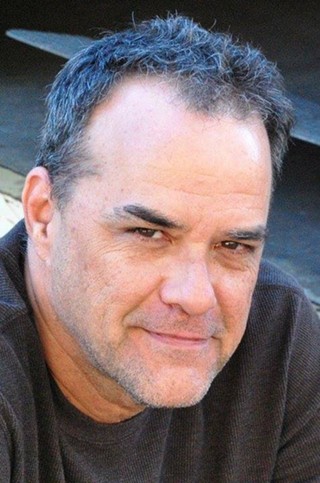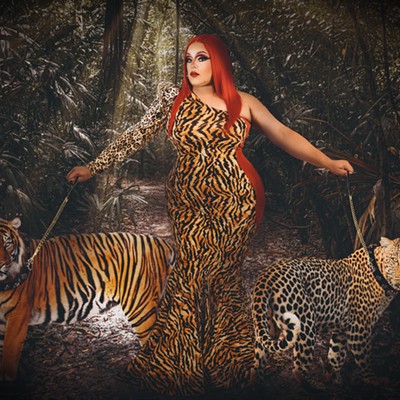When producer Al Brodax, director George Dunning and a team of 200 animators made Yellow Submarine in 1968, there was no such thing as home video. Your movie was crafted for the big screen, and the big screen only, and only after it had run its course would it go —maybe — to network television for a prime–time showing or two.
In advance of its re–release on DVD, Yellow Submarine is being screened in theaters across the country during May. In Savannah, the animated fantasy surfaces Thursday, the 24th at the Trustees Theater.
More than ever, this is a film that needs to be seen on a theater screen. With its trippy, pop–art look, freaky characters, barely–linear storyline and use of actual, living people (the Beatles) as protagonists, Yellow Submarine was, in many ways, a quantum leap in animation.
Brodax was the head of animation at King Features, an American cartoon studio that churned out Snuffy Smith, Krazy Kat and Popeye shorts for television.
“Filling the big screen,” Broadax told this reporter in 2004, “is different from filling the little box, so we had to adopt a different technique. Something richer. I wanted to do something other than what Disney would do.”
Yellow Submarine was to be King Features’ cinematic upgrade of The Beatles, the low–budget Saturday morning series Brodax and company produced between 1965 and ’67.
Obviously, the bar needed to be raised.
“I didn’t create the word, but I kept using it in the studio: I said we’re not doing animation, we’re doing art–imation,” Brodax said. “And I put a big sign up in the studio that said Disney — The Opposite.”
Over the decades, Yellow Submarine has settled into an odd little corner of the Beatles legend. They didn’t write it, and except for a two–minute segment at the end, they don’t actually appear in it.
The speaking voices of their animated counterparts were supplied by actors. “The voices were terrible,” Paul McCartney once said. “We just refused to do them ourselves. We said ‘I’m not sitting there for hours, doing all these crummy jokes.’”
And Yellow Submarine isn’t a “Beatles movie,” in the way of A Hard Day’s Night and Help! In fact, it was the group’s desire to get out of their contract with United Artists, which called for a third film, that led to the animated feature.
Still, “They really disliked the TV series,” producer Brodax explained. “It was done with a very limited budget — $32,000 was the budget for the half hour, half of which (manager) Brian Epstein took for the Beatles. So we could only do a very limited kind of animation.
“Hanna–Barbera were the pioneers in limited animation, and they did a wonderful job with it. And our show was limited–limited animation. John Lennon, who was an artist, said ‘It’s just a terrible, chintzy–looking thing,’ and I couldn’t agree more.”
The idea to fulfill the contractual obligation with a cartoon — which the Beatles themselves wouldn’t have to bother with at all, other than lending their names and music — came from Brodax.
Recalled McCartney: “I kept trying to persuade them to do a really simple cartoon, like a Disney cartoon, really, about a place where there were yellow submarines and blue submarines. But they wanted to keep the spirit of where our music was up to. And it was getting pretty psychedelic by now.”
It was 1967, the era of Sgt. Pepper’s Lonely Hearts Club Band. Unable to keep up with the Beatles’ rapidly–evolving music (and physical appearance), the Saturday morning TV show had ceased production.
Brodax had big ideas for his big–screen Beatles cartoon. After selling the Beatles and Epstein on the idea, he hired the German illustrator Heinz Edelmann to design the look of the characters and the film.
“Heinz gets all the credit in the world, because he’d never done animation,” Broadax said. “He was a superb graphic artist, but he had no training in animation.
“And it was very difficult for the animators because his basic line is rectangular, and animation really requires circular motion to enable the characters to move. So he had a tough time at the outset.”
Edelmann came up with an arsenal of villains - Blue Meanies, Apple Bonkers, Snapping Turtle Turks and the Dreadful Flying Glove - like something out of a Salvador Dali painting. They did “battle” with the “Beatles” in a swirly-colored twist on good vs. evil.
He sketched the Beatles themselves in mid-1967; by the time the movie was released, they looked like four entirely different people.
Although credited to Lee Minoff, the produced screenplay was a collaboration between Jack Mendelsohn, Broadax and Erich Segal (who would soon write Love Story and make a million bucks). With a budget of $1 million, and an 11–month production window, most of the movie was crafted in a London studio while the Beatles themselves were away in India, studying transcendental meditation with Maharishi Mahesh Yogi.
The United Artists deal called for four brand–new songs, Brodax said, in addition to a dozen beloved Beatles classics.
“That was a promotional gimmick, a way to advertise the thing: ‘Four songs you’ve never heard before, specially made for this motion picture.’”
Such was their disdain for the project, the group gave him three songs deemed unworthy of inclusion on Sgt. Pepper or Magical Mystery Tour (“Only a Northern Song,” “All Together Now” and “It’s All Too Much”) and one they’d knocked off in an afternoon, on the eve of their sojourn to India (“Hey Bulldog”).
“They were terrible,” said Brodax. “But I was grateful for any crumb. We just had to make do; if you get lemons, you gotta make lemonade.”
(Ironically, although it appeared in English cinemas, and on the cash–in soundtrack album, “Hey Bulldog” was trimmed from the film – for length and continuity reasons – by the time it premiered in the United States in November of ‘68.)
In the end, despite the (live) Beatles’ brief cameo, UA did not accept Yellow Submarine as fulfillment of the contract (that would come with the documentary Let it Be in 1970).
The four Beatles eventually warmed to Yellow Submarine, and after its critical success were only too happy to take some of the credit for it.
Yellow Submarine
Where: Trustees Theatre, 216 E. Broughton St.
When: At 8 p.m. Thursday, May 24
Amission: Free (announced May 15)



























